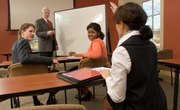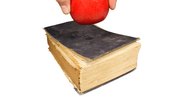When it comes to teaching there are a variety of methods and approaches educators use in the classroom. It is important for educators to choose methods that best meet the needs of their students and fit with their personality and comfort level along with the subject area being taught.
Teacher as Facilitator
In the teacher as facilitator approach to learning, very little teacher-centered instruction such as lecture and modeling takes place in the classroom. Students are responsible for their own learning, which follows the standards and concepts students are required to learn. In this approach teachers provide students with the concepts they are required to learn and the tools to learn about those concepts, such as websites, books and videos. Students then investigate these concepts on their own or in small groups with the teacher watching to keep students on task and answer questions.
Problem-Based Learning
Problem-based learning is a teaching method that works best in a science or math classroom. With this method teachers present students with a problem with real-world significance and challenges them to solve it individually or in small groups. Students must determine what they already know about the problem, list possible solutions and then complete research to determine the appropriate solution. In a science class students use knowledge of local habitats and regions to determine why an animal is becoming extinct. Students apply this concept in math by designing a playground that includes specific geometric shapes.
Cooperative Learning
The cooperative learning approach to teaching allows students to share information and complete goals as a group. This approach builds organizational skills, leadership skills and social skills. Educators must teach students how to successfully work in cooperative learning groups, lay out rules for appropriate communication and hold all students accountable for the work completed by the group. Cooperative learning groups are used in conjunction with a problem-based curriculum allowing students to put their heads together to solve problems or on its own to have students share knowledge and work together to learn.
Service Learning
Service learning is an approach to teaching combining essential academic skills with civic responsibility. Teachers give students the opportunity to take what is being learned in the classroom and transfer it to service and community activities. For example, in a college-level architecture class, students design homeless shelters for a local community. In an elementary or middle school science class students observe a plant's life cycle while creating a community garden. Students use an English class to write letters to soldiers or create brochures to advertise local nonprofit groups.
Learner-Centered
In learner-centered teaching, teachers use best practices and student learning styles to guide how the curriculum is taught. The goal of a learner-centered classroom is to see students make gains rather than to cover a set curriculum. Teachers allow students a choice of projects and assessments to meet their individual learning styles. Portfolios of student work and nationally-normed assessments are used periodically to monitor student growth.
Related Articles
References
Writer Bio
Stacy Zeiger began writing in 2000 for "Suburban News Publication" in Ohio and has expanded to teaching writing as an eighth grade English teacher. Zeiger completed creative writing course work at Miami University and holds a B.A. in English and a M.Ed. in secondary education from Ohio State.











